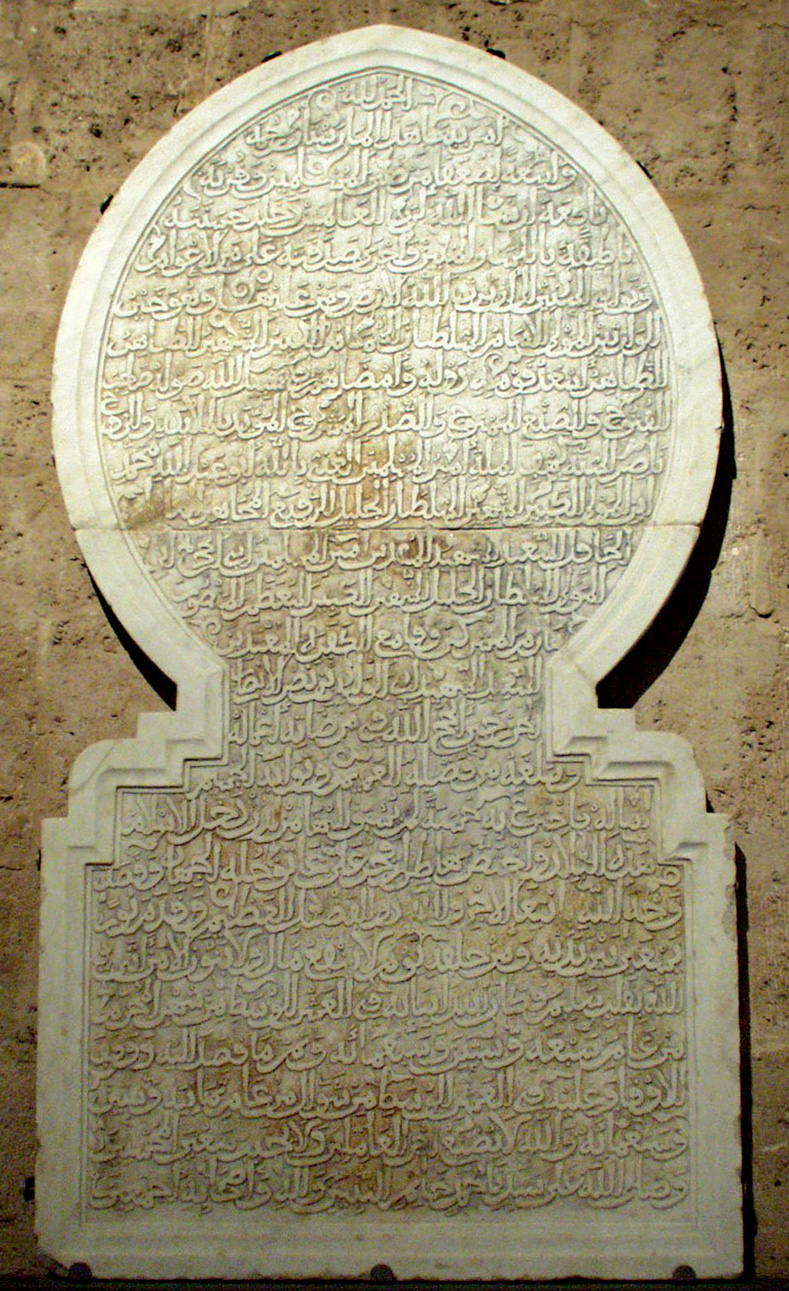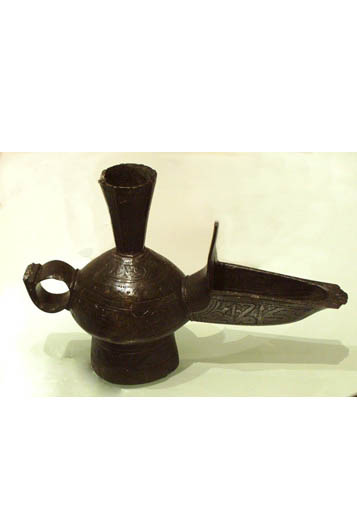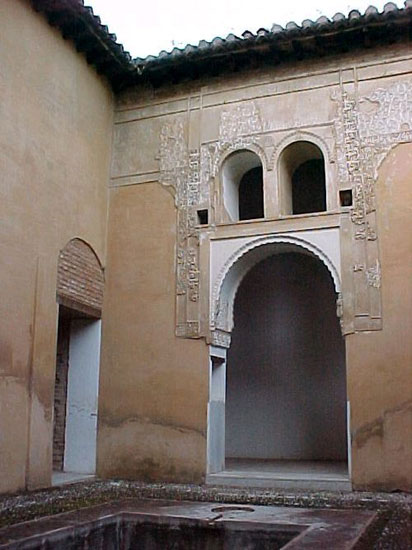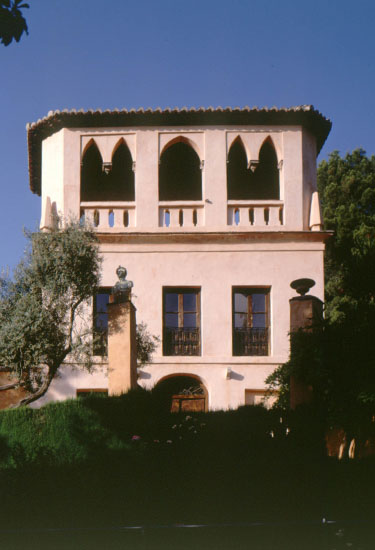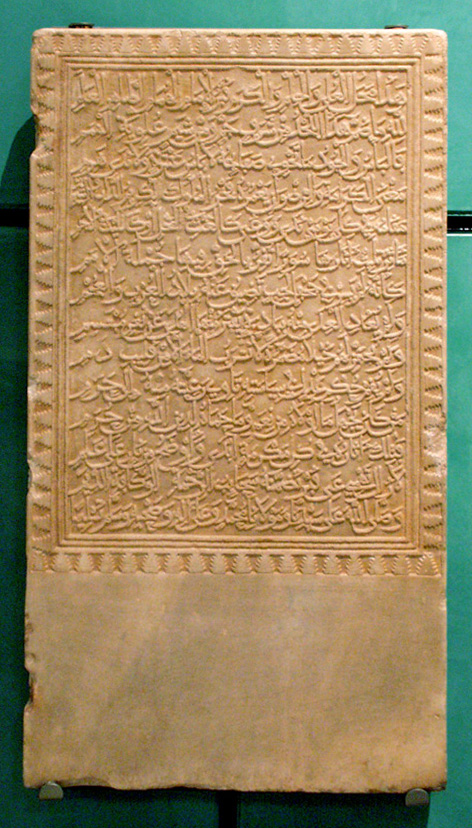The lions from the maristán
The most majestic survivors of the wealth of art of al-Andalus, these two lion sculptures are excellent examples of the use of animal designs in the water-spouts for fountains and ponds. Similar sculptures have been described by historians and poets across the breadth of Arabic literature, from those of the mythical pre-Islamic palaces to those of the Umayyads of Madinat al-Zahra’ right up to the world-renowned examples in the Court of the Lions at the Alhambra.
These two lions were sculpted in blocks of limestone with nodules (according to Carmen Tienza). They are free-standing (including their rectangular bases) with very similar, although not exactly the same, dimensions and features. A tube runs through a hole drilled from the base to the mouth. They are around 1.5 m tall, 1.3 m long and 55 cm wide. They are shown in a static, forward-facing position, sitting on their haunches but with their front legs standing rigidly straight, like guards on the alert. Interesting features include the rounded volumes of the large head (neither retains its ears), of the swollen chest and of the bottom with a long tail lying neatly on one flank. They have powerful claws, long manes each carved in a slightly different way, and faces with a threatening expression due to their wrinkled snouts with stiff folds and jaws with tightly-clenched, visible teeth. This pose resembles that of the pairs of guardian lions often seen protecting Chinese buildings.
The Nasrid Sultan Muhammad V used lion sculptures as water spouts to decorate some of his constructions in the second half of the 14th Century. In total sixteen lion figures from the Nasrid era survive today. Twelve of these stand around the fountain in the centre of the courtyard of the Palace of Riy?Å al-Sa‘?d (Court of the Lions). There is also a fragmented lion from the Royal House (today the San Francisco Parador Hotel) and a second incomplete lion found in the neighbouring Secano area of the Alhambra, and finally this pair from the now vanished Maristán Hospital.
This hospital (maristan, in Arabic) was founded by Muhammad V, in 1367, in the Axares district of the city, today referred to as the Low Albaicín, very close to the River Darro and opposite the Alhambra. All that remains is an empty site practically in ruins. In its heyday it was a large two-storey building with a rectangular floor-plan, with the façade on one of the smaller sides, a central courtyard with a portico on all four sides, a pond in the centre and side galleries with the rooms. Our pair of lions, now well guarded at the Museum of the Alhambra, once spouted water into this central decorative pond.
This talk will be broadcast live on Saturday 26 March on the Periscope application for smartphones and tablets
Time: Saturdays at 12:00
Place: Room IV, Museum of the Alhambra, Palace of Charles V





 Contact
Contact






